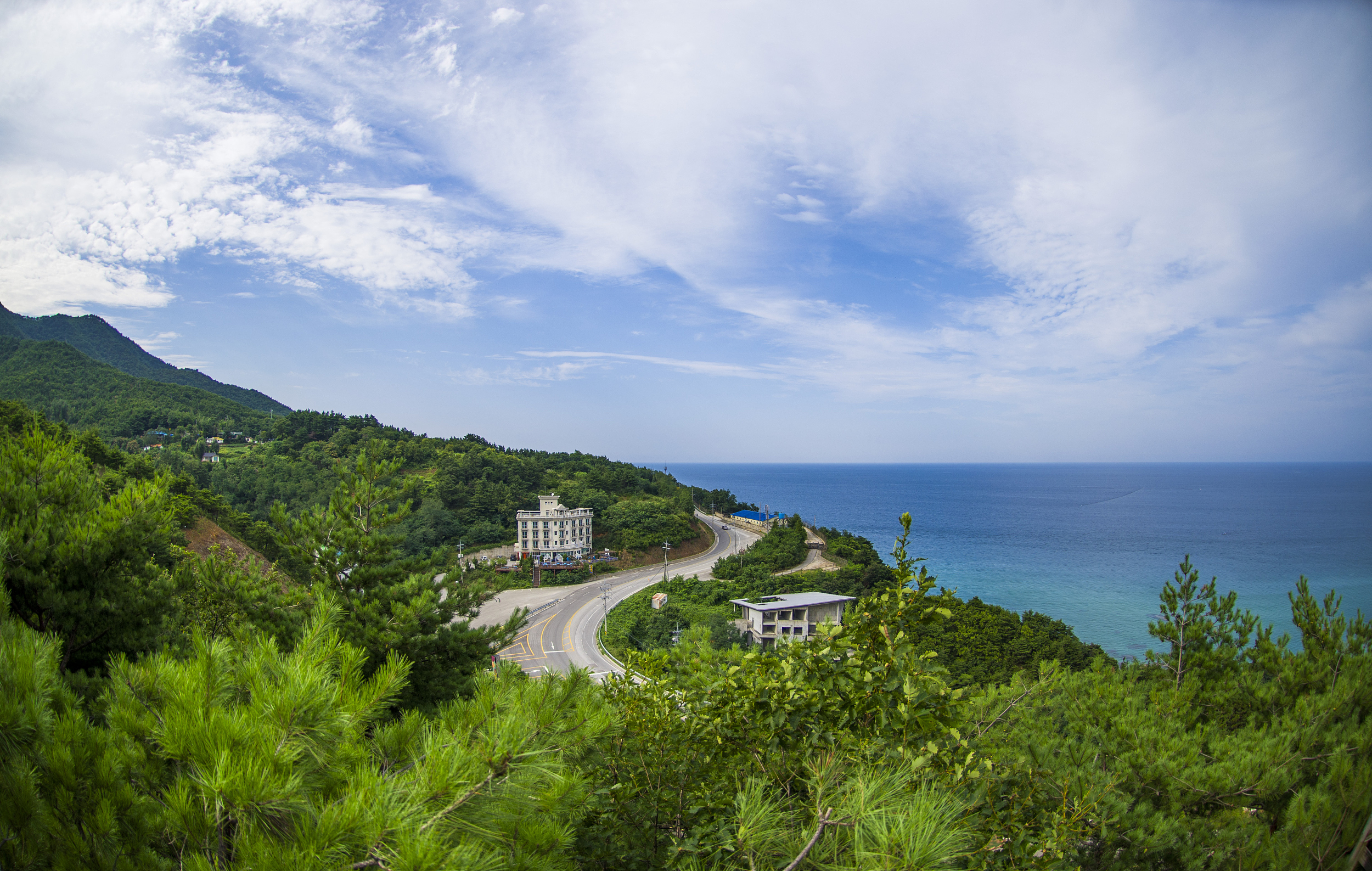https://ph.trip.com/moments/destination-hongseong-gun-1595787/
2025 Hongseong-gun Travel Guide: Must-see attractions, popular food, hotels, transportation routes (updated in July)
Hongseong-gun的今日天氣
Cloudy 25-33℃
All Trip Moments about Hongseong-gun
The moment when you want to enjoy your own space-!
When ho-kangs are no longer fresh, If you want to get out of the city and stay in a private place, ‘Voluntary Isolation’ is the perfect need. The hot new accommodation that opened in June of this year is located in Hongseong, where the hot Stayty participated. It is a small, independent accommodation, but it has a swimming pool, jacuzzi, beam projector, and even a space to enjoy a fire - it is decorated with a space that may be more substantial than a hotel. The cozy bed is large enough for up to 4 people, so it is a place that can be used by not only couples but also families. As the name of the accommodation, Voluntary Isolation, suggests, there is delivery and a mart nearby, so prepare food in advance and enjoy this space to the fullest! #FreeStayEvent #EmotionalAccommodation미니만이3Chungnam Hongseong Kerencia Cafe 🩵
#Cafe with a good view Cafe Kerencia in Namdang-ri, Hongseong, Chungnam 🩵 The cafe is well decorated, and the exterior color is butter-colored, so it is a cafe full of warm and pretty emotions There are many photo zones decorated with cute props here and there, so the pictures come out pretty There are also outdoor seats where you can sit while looking at the sea view :-) 🏡 Kerencia 📍 Kerencia, 96 Namdanghang-ro 213beon-gil, Seobu-myeon, Hongseong-gun, Chungnam ⏰ Every day: 10:00 ~ 22:00 🚗 Parking lot: O데일리윤19Hongseong's atmospheric cafe, Thehobong 💚
#Cafe with a good view Hongseong Cafe with a great atmosphere, The Hobong 💚 The cafe is big, clean, and the atmosphere is really good :-) It's a perfect cafe to go with your family! There's also Hongju-eupseong in front, so it would be nice to stop by Hongju-eupseong and then go to the cafe :-) The rooftop view is nice, and the interior is really pretty! 💚 The Hobong 📍 58 Naepo-ro, Hongseong-eup, Hongseong-gun, Chungcheongnam-do 2-dong ⏰ Every day 10:00 ~ 22:00 Last order 21:30데일리윤28A great cafe to take a break in Hongseong
#CafeRecommendation This is Dehari Cafe located in Hongseong, Chungnam Province. The interior is spacious and comfortable, and it has a cute old-fashioned house feel, with 3 seats! The shaved ice looks delicious, so I stopped by to take a break after a long driveㅎㅎ It's a cafe worth stopping by when you go to Anmyeondo or Ganwoldo! 🎈860 Namdanghang-ro, Seobu-myeon, Hongseong-gun, Chungnam Province 🎈Daily 11:00~19:00sungwhy20Chungnam Hongseong steamed kalguksu restaurant🍜
I like kalguksu I usually eat it deliciously, but this place was a real restaurant! I couldn't stop thinking about it because I even ate soybean noodles so deliciously..😭 They say there's no compromise in the taste of kalguksu. It seems like it's true☹️ 📍Dangane Soksal Kalguksu 🏷️208 Docheong-daero, Hongbuk-eup, Hongseong-gun, Chungcheongnam-do 🚘Parking available 📞041-631-9788 🍜Kongguksu (8.0) Soksal Kalguksu (8.0)노햐8용볼산
Getting There - 1-2 Mt., Sangha-ri, Hongbuk-eup, Hongseong-gun, Chungcheongnam-do Attractions - Located in Hongbuk-eup, Hongseong-gun, Chungcheongnam-do. It is not a big mountain with a height of 381m, but the entire mountain is made up of strange rocks and peaks and is beautiful enough to be called Mt. Geumgang in Chungcheongnam-do. It is characteristic that the scenery changes every time you change the direction as if you are looking at hundreds of Korean paintings on the way. You can see Deoksungsan Mountain and Gayasan Mountain from the top of Yongbongsan Mountain. Hotels - Food & Restaurants - yes Shopping - wala #mytripvlog #hikingDjiAir2s Korea3Shasta daisies and green beans, a place to see the sea sunset. 🌼🌊🌅
#SpringFlowers Shasta Daisy 🌼 and Green Bean Field 🌱🌱 ...and the sea..🌊 All in one place at Hongseong's Cafe Beets ☕️ The sunset over the West Sea 🌅 Just speechless.... No further explanation needed, right? 🫢 ㅡㅡㅡㅡㅡㅡㅡㅡㅡㅡ 📍Cafe Beets 🚩1, Namdang Hang-ro 72beon-gil, Seobu-myeon, Hongseong-gun, Chungcheongnam-do 🚘Parking available ⏰Open daily from 10am to 8pm 📞0507-1383-0459 ☕️Beets Ocean Latte (8.0) 🍦Milk Ice Cream (4.5) 🗓️Visited on May 14th, 23 . #Chungcheongnam-doCafe #Chungcheongnam-doAttractions #Hongseong #HongseongCafe #RecommendedHongseongCafe #HongseongBeetsCafe #BeetsCafe #ShastaDaisyCafe #GreenBeanFieldCafe #OceanViewCafe노햐400What should I eat today? Korean beef restaurant, Naedanghanwoo, Hongseong, Chungnam🐮
Famous for many mukbangs and celebrity visits Chungnam Hongseong Naedanghanwoo🐮 When traveling around the country, I try to visit the best Korean beef restaurants in the area If possible, but this place is almost always ranked 1-2nd among the places I've been to! It's a place that has a pride in only handling fresh, high-quality Korean beef slaughtered on the same day It's definitely different from the aged Korean beef you eat in the city! As soon as I put it in my mouth, I was like, "What is this?" It's a place I want to go to again💜 It's become more famous because Shin Dong-yup, Kim Jun-hyun, etc. have praised it so much on What's for dinner today, and Delicious Guys, but the shrimp meat is really Amazing! It's so delicious, but if you want to eat your fill for two, 300,000 won is a The downside is that it comes out quickly😂 - - 📍Hongseong Naedanghanwoo 🧭 6, Amungil 52beon-gil, Hongseong-eup, Hongseong-gun, Chungcheongnam-do ⏰️11:00-22:00 (breaks/closed on Chuseok and Lunar New Year) #HongseongTravel#KoreanBeefRestaurant슈슈유니6Hongseong Seulteo Camping Ground, where free camping is attractive
Location: 46 Hongnamseo-ro 362beon-gil, Seobu-myeon, Hongseong-gun, Chungcheongnam-do The appeal of Hongseong Seulteo Campground is that the spot location is not fixed, so you can camp freely. It is nice that you can enjoy the space between the wide lawns. The price is also cheap, so it is good that you can go with many people without feeling burdened. The advantage is that you can enjoy the festival that is currently going on because Namdang Port is close. #HotPlace #RecommendedCampingSite #HongseongTravel #CampingSiteReview #CampingSiteReview볼봉3Come to Namdang Port to eat some delicious, jumping shrimp!
Hongseong is not only famous for Korean beef!! I found Namdang Port, which is visited by many people on the subway💕 If you go out with your family, put shrimps that are jumping around in a pot, grill them with salt, and look around the port, the weekend will fly by👩🏻❤️💋👨🏻 📍Namdang-ri, Seobu-myeon, Hongseong-gun, Chungcheongnam-do #Namdang Port #Hongseong Travel #Salt Grilled Shrimp서울트리비6Yongbongsa Temple Walk
Yongbongsa Temple located on Yongbongsan Mountain A must-see course for Hongseong travel Yongbongsa Temple's Maebul is really cool Make a wish in front of Maya Buddha^^! Yongbongsa Temple is greatㅎㅎㅎ #Winter traveleunbiniayo6Winter Climbing on Yongbongsan Mountain
The magnificent view of Yongbongsan Mountain in Hongseong-gun, Chungnam Snowy mountains are always beautiful. You can climb to the top in 4 hours Yongbongsan Mountain has a very beautiful landscape I recommend it as a winter travel destination #Winter traveleunbiniayo9Sunset restaurant with a view of Anmyeondo, Bits Cafe in Hongseong, Chungnam☕️
In Hongseong, Bits Cafe is still quite popular. It is located in a quiet place far from the city center, so if you admire the sunset on the west coast and follow the coastal road, you will think, "Oh? A cafe in a place like this?" It is located on the outskirts. You will think, "There is a cafe like this in Hongseong~" and the sunset view from here was so pretty. This is a sunset restaurant 🧡 The coffee and bakery are just so-so. The interior of the cafe is also simple, but this point where you can take pictures from outside is pretty, so I recommend going around sunset. There is a thinking chair in an unexpected place! Look it up♥ - - 📍Chungnam Hongseong Bits Cafe 🧭1 Namdanghang-ro 72beon-gil, Seobu-myeon, Hongseong-gun, Chungnam ⏰️11:00-20:00 (Christmas 10:00-21:00) #Cafe with a good view#Hongseong travel#Chungnam cafe슈슈유니10Sokdong Observatory that you can see in 20 minutes🐳
📍Hongseong Sokdong Observatory in Chungnam Hongseong Namdang Port's Sokdong Observatory is famous for its beautiful sunset view! It's a simple tourist destination that takes 20 minutes to go back and forth from the parking lot to the top of the observatory, but the trees on the way up, the sea on both sides, and the West Sea seen from the observatory are so beautiful! It's easy for the elderly to visit, so it's good to bring your parents, and it's not a tourist destination that takes a long time to see, so it's a good place to stop by for a quick look👍웽지5Hongseong Jukdo Ocean View Trail, great for a walk🌲
📍 Chungnam Hongseong Jukdo Circular Road Jukdo is a place where you have to take a boat from Hongseong Namdang Port to get there! You need an ID to board and the entrance fee is 10,000 won per person for a round trip! I was worried about whether I should go around the Circular Road, but the island itself is so pretty and there are so many oceans and photo zones to take pictures of that I didn't even realize how much time had passed👍 There were many families who came and the boat ride was short, so you can go without worrying about seasickness, so I recommend visiting when you travel to Namdang Port!!웽지4A cafe full of Jeju Gamseong that you can feel in Hongseong
Thanks to the palm trees, this place is full of #foreign sentiment + Jeju sentiment? Hongseong‼️ Hongseong Goya Coffee It's even more exotic and pretty when you go at sunset🫶 📌 Goya Coffee ✔️ A place full of Jeju sentiment + foreign sentiment🌿 ✔️ Every day 11:00 - 21:00 ✔️ Lots of pretty and delicious desserts🥰 #Domestic travel #Hongseong #Jeju sentiment cafe #Insta sentiment cafe #Goya coffee조이 ENJOY5Hongjusanseong Fortress, an old earthen fort with a view of Hongseong city
📍Hongseong Hongjusanseong ▪️There is an old earthen fortress right next to Hongseong city ▪️There are also places to rest in Hanoks here and there, so it's great for an outing with the family #Hanok뚜벅 뚜벅7Climbing Yongbongsan Mountain
#Hiking #Hongseong #Yesan People would be nice. Because this is a nice mountain in the neighborhood 🥲 After descending from Yongbongsan, if you go a little further, you will come across Sudeoksa Temple, where the first nun in Korea was born (Lots of good restaurants)Joovely6Climbing Yongbongsan Mountain
#Hiking It only took about an hour to get to the top of Yongbongsan. Despite being a very small mountain, there are various courses such as a rock climbing course, a rough course, a nice ridge path for walking, and a path with rustling leaves. This is why Korean mountains are so great. I think it was around this time that I started wearing hiking boots. I've been wearing them well ever since. #Yongbongsan #Hikingmanul4“Hongseong Pure Pension” where the West Sea is attractive
#SpringTravel ㅇ Pension Name: Hongseong Pure Pension ㅇ Address: 839 Namdanghang-ro, Seobu-myeon, Hongseong-gun, Chungcheongnam-do For spring travel, I recommend a sea trip to Hongseong, Chungcheongnam-do! It is located near Gungri Port, but it is also very close to Namdang Port, so it is a good place to stay nearby when going to the Namdang Port Festival. 🙂 And the sea is right in front, so it is great~! It is good for taking a walk and having a barbecue..👍🏻 #UniqueAccommodation #HotPlace #SpringTravelRecommendation #HongseongTravel #PurePension유로로는호캉스가쪼앙4A place to enjoy a barbecue with friends on a nice spring day
#SpringTravel ㅇ Location: Hongseong Pure Pension ㅇ Address: 839 Namdanghang-ro, Seobu-myeon, Hongseong-gun, Chungcheongnam-do ㅇ Room I stayed in: Room #1 A place with a charming sunset, the West Sea Hongseong Pure Pension! Rooms 1 and 2 of this pension have a private terrace and a space for a private barbecue 🙂 In particular, Room 1 has a barbecue space right next to the sea, so you can grill meat while watching the sunset👍🏻 #UniqueAccommodation #HotPlace #NamdangPortTravel #HongseongTravel #PurePension유로로는호캉스가쪼앙5Hongju Castle with a beautiful night view
This is Hongju Castle located in Hongseong🌙 It's a place with a really pretty night view! No matter where or how you take the picture, you can take a picture full of emotion It's a place that will make your heart open just by looking at it #Places to visit in Korea연양갱5Flower-Filled Bliss in Hongseong
#summervacay Okay, so Bits Cafe in Hongseong is basically a dreamy flower field plus a café, and I’m honestly still not over how cute it was. The second you step in, it’s like nature and coffee had a perfect little baby. There are flowers everywhere, like full-on garden explosion. Seasonal blooms, pastel vibes, and photo zones that basically beg you to whip out your camera. I grabbed an iced latte (super solid btw), then wandered out into the field and just took my sweet time soaking it all in. The place isn’t huge, but it’s super well-kept and peaceful. You’ve got the hum of bees, flower scents floating around, and enough space to just chill without feeling rushed. The inside of the café’s just as pretty, light, airy, and aesthetic as heck. If you’re into laid-back nature cafés with major flower power, this one’s a gem. Come for the blooms, stay for the caffeine and serotonin boost. Would 100% go again with friends or solo.Neng9iOseosan, Small But Mighty
#summervacay Checked out Oseosan (790m) and wow, don’t let that height fool you, it’s got some bite. The trail kicks off all peaceful in the forest, birds chirping, breeze in the trees, all that good stuff. But pretty soon, it’s a steady climb with rocky stretches and some steep stair sections that’ll have you questioning your life choices (in the best way). What I loved most? It’s not overly crowded. Just a few hikers here and there, so it felt calm and personal, like the mountain was all mine for the day. The views near the top are seriously underrated too. Once you hit the summit, you get a wide, clear panorama of surrounding hills, fields, and sky. Totally peaceful, with a side of accomplishment. Perfect half-day hike if you want a solid workout without going full beast mode. Bring water, take breaks, and enjoy the quiet. Oseosan may be under the radar, but it hits all the right notes.Neng9iザホボン
This time, I visited Hongseong County, located about an hour and a half by train from Seoul, South Korea! This café is conveniently accessible, just a ten-minute bus ride from the station! The café is famous for its garlic bread, so I decided to try it! It was filled with plenty of cream cheese, and I was thoroughly satisfied! The view from the outdoor benches was fantastic, and the café interior had plenty of seating, making it a great place to relax! Definitely give it a visit! ザホボン Chungcheongnam-do, Hongseong County, Hongseong-eup, Ogwan-ri 437-6 Business hours: 10 AM to 10 PM Last order: 9:30 PMきくのんHongseong's Asari Sunset Park is a great place to take a walk 🌊
#OutdoorDate I visited Eosari Sunset Park, which is considered one of the best sunset spots in Hongseong🧡 It's fun to watch the sky change color depending on the time, so you can feel different charms during the day and at night💙 I couldn't go there during sunset, but if you go at sunset, you can enjoy a more beautiful sunset park🌅 If you climb up to the observatory in the park, you can enjoy the wide open view of the West Sea -! During sunset, the beautiful sunset of the West Sea unfolds, and it's truly spectacular There's also a well-made walking path nearby, so it's good to take a light walk around and come - 💚 🌊 Eosari Sunset Park 📍53 Namdanghang Bicycle Road, Seobu-myeon, Hongseong-gun, Chungcheongnam-do데일리윤Hongseong Somyeongukbap, also famous as a celebrity restaurant
#Domestic travel #Hongseong travel #Hongseong restaurants This place was praised as the best somyeon gukbap in the world on TV, so I visited it for the first time a few years ago, but I remember it so well at the time, so I visited again after a long time. But I guess the more you know, the more your taste buds are afraid. It was definitely a delicious place. I liked Yesan somyeon gukbap the best, and I recommend this place as a great restaurant. - - 📍70 years of somyeon gukbap 27-9, Uisa-ro 43beon-gil, Hongseong-eup, Hongseong-gun, Chungcheongnam-do기도안차1Hongseong Somyeong Gukbap with 70 years of history💜
#DomesticTravel #HongseongTravel This place was praised as the best somyeoni soup in the world on TV, so I visited for the first time a few years ago but I think I had only vague memories of it then so I visited again after a long time! But I guess the more you know, the more your taste buds are afraid. It was definitely a delicious place. I liked Yesan somyeoni soup the best so I recommend this place as a great restaurant💜 - - 📍70 years of somyeoni soup 27-9, Uisa-ro 43beon-gil, Hongseong-eup, Hongseong-gun, Chungcheongnam-do슈슈유니

Popular Hongseong-gun Topics

2025 Recommended Attractions in Hongseong-gun (Updated July)
40 posts

2025 Recommended Guides in Hongseong-gun (Updated July)
28 posts

2025 Recommended Restaurants in Hongseong-gun (Updated July)
27 posts

Destinations related to Hongseong-gun

2025 Seoul Travel Guide: Must-see attractions, popular food, hotels, transportation routes (updated in July)
31520 posts

2025 Gangneung-si Travel Guide: Must-see attractions, popular food, hotels, transportation routes (updated in July)
1905 posts

2025 Gwangju Travel Guide: Must-see attractions, popular food, hotels, transportation routes (updated in July)
956 posts
- 1
- 2
- 3
Post
更多推薦
Popular Trip Moments
Flower-Filled Bliss in Hongseong | Oseosan, Small But Mighty | ザホボン | Hongseong's Asari Sunset Park is a great place to take a walk 🌊 | Hongseong Somyeongukbap, also famous as a celebrity restaurant | Hongseong Somyeong Gukbap with 70 years of history💜 | Hongseong, Chungnam, a great place to visit for 1 night and 2 days (feat. Shabu Shabu Festival of the Newlyweds) | Hongseong Nemo Pension near Namdang Port | This is the Hongju Castle History Museum in South Chungcheong Province, South Korea. | This is the Manhae Han Yong-un Memorial Hall in Hongseong-gun, Chungcheongnam-do, South Korea. | This is the birthplace of General Kim Jwa-jin in Hongseong, South Chungcheong Province, South Korea. | Seoul Station Halmaek | Reverse the course | Hongseong Natural Recreation Forest | Chungnam restaurant recommendation👍🏻 | Beer from the reverse grandmother | Yeokjeonhalmaek, where the cool ice beer is the best | A restaurant with a great view of Yeokjeonhalmaek | Hongseong Tolmi House, a perfect reproduction of my grandmother's house in the countryside | Hongseong Bellino Hotel | Gwangcheon Joseonok | Quiet West Sea Cafe Recommendation ‘Cafe de Hari’ | Cafe de Hari, a sunset restaurant that only I want to know about | A West Sea sunset restaurant known only to those in the know🌅 | Turtle Village where you can see cherry blossoms and daffodils 🌸🌼 | Beautiful Cherry Blossom of Hongseong Gun | Hongseong | Chungcheong-do Village Vacation Recommendation 🏡 Take it easy in a quiet rural village 🍃 | Ride the last cherry blossom train with a combination of cherry blossoms and daffodils🌸♥
Recommended Attractions at Popular Destinations
Attraction near Bangkok | Attraction near Manila | Attraction near Tokyo | Attraction near Taipei | Attraction near Hong Kong | Attraction near Seoul | Attraction near Kuala Lumpur | Attraction near Los Angeles | Attraction near Shanghai | Attraction near New York | Attraction near Shenzhen | Attraction near Osaka | Attraction near Singapore | Attraction near London | Attraction near Guangzhou | Attraction near San Francisco | Attraction near Beijing | Attraction near Macau | Attraction near Bali | Attraction near Jakarta | Attraction near Paris | Attraction near Ho Chi Minh City | Attraction near Istanbul | Attraction near Phuket | Attraction near Chicago | Attraction near Seattle | Attraction near Toronto | Attraction near Orlando | Attraction near Cebu | Attraction near Chiang Mai
Popular Restaurants in Hongseong-gun
Geumho Garden | Han Ol Chae | Fish & Grill | Suliya | Ma-Eulchon | Sea Nation | Kimbap Heaven | Grandma Restaurant | Daemyeong Sashimi Centre | Boryeong Cold Buckwheat Noodles Charcoal Fire Ribs | Smile Noodles Soup | Bbq Chicken | Seok Dang Seafood Noodles Soup | Dae Eo Sashimi Restaurant | District Magistrate Ribs Ox Bone Soup | Oksu Suro Meat Grill House | Fisher Sashimi Restaurant | The Old Castle Wheat | Thank You Mam Chicken | Cow Korean Beef Speciality | Jisune Kind Tripes | Dragon Palace Hall | Sodam | Hometown Yummy House | Hong Donghan U | Iut House Noodles Soup | Aria Chicken Hof | Nae Dang Korean Beef | Hanulso | Mido Sikdang
Popular Ranked Lists
Popular Best Things to Do in Hami | Popular Premium Hotels in Emirate of Fujairah | Popular Premium Hotels in Navarre | Popular Must-Visit Restaurants in Florence | Popular Best Things to Do in Wuhai | Top 15 Best Things to Do in Ganzi Prefecture | Popular Must-Visit Restaurants in Bali | Popular Premium Hotels in Ilfov | Popular Must-Visit Restaurants in Auckland | Popular Premium Hotels in Arad | Top 3 Best Things to Do in Fuding | Popular Must-Visit Restaurants in Taipei | Top 8 Best Things to Do in Jining | Top 5 Premium Hotels in Montevideo | Popular Must-Visit Restaurants in Barcelona | Popular Must-Visit Restaurants in Santorini | Popular Must-Visit Restaurants in Bangkok | Popular Must-Visit Restaurants in Chengdu | Popular Must-Visit Restaurants in Bruges | Popular Best Things to Do in Huangshi | Popular Must-Visit Restaurants in Jeju | Popular Best Things to Do in Dongying | Top 4 Best Things to Do in Yingkou | Popular Must-Visit Restaurants in Rome | Popular Best Things to Do in Ankang | Popular Premium Hotels in Northumberland | Popular Best Things to Do in Jingmen | Top 5 Premium Hotels in Morelos | Popular Best Things to Do in Jiaozuo | Top 3 Premium Hotels in Bratislava Region
Payment Methods
Our Partners
Copyright © 2025 Trip.com Travel Singapore Pte. Ltd. All rights reserved
Site Operator: Trip.com Travel Singapore Pte. Ltd.
Site Operator: Trip.com Travel Singapore Pte. Ltd.